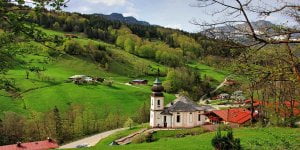Tourism industry provides employment to more than 255 million people which accounts to almost 8 % of the employment in the world. There are several factors which affect tourism business. The employment opportunities in tourism range from hotel industry, transportation and recreation business to road side vendors and laundry people.
For your invoicing needs Zintego Invoicing Free App
As tourism is considered to be an interdisciplinary subject, it involves a wide range of players directly or indirectly related to any of the tourism activities in the destination. It contributes to 11 % of the GDP of the world along with 7.9 % export share and 9.4% capital investment in its various sectors and more than 30% of Services exports.
Tourism is a worldwide growing industry, demand for international tourism in 2016 grew by 3.9% to reach magical number of totals of 1,235 million i.e., 46 million more overnight visitors compared to the year 2015. Tourism involves billions of people at the demand side but also millions at the supply side that directly or indirectly depends on it.
Billions of mon is disbursed every year for setting up basic amenities in the existing destination and the establishment of a new destination. This money is spend in promotion and advertising of the destination. On the other hand, there is large amount money is spend by tourist for travelling and staying in these destinations.
The growth of tourism is fuelled due to increased leisure time, higher disposable incomes, and falling costs of travel because of globalization, industrialization, automation and digitalization. The digitalization and power of Internet has powered tourist by providing on line booking facilities that boost the growth of the travel industry.
Internet has also delivered tourist with the power to explore destinations and cultures prior visiting places from their personal computers and make travel decision before finalizing travel plans. It also allows tourists to scrutinize hotels, and taking review of other tourist in mind, pre-visit check of weather forecasts, gen up on local food and even chat with other tourists online around the world about their overall travel experiences before choosing a destination.
Important Factors Influencing Growth of Tourism

1. Demographic
The composition of the population in a country plays a major role in affecting many dynamic industries like the tourism industry. These factors primarily include age, income level and family members earning, size of the household, nationality, gender, culture, food habits, climate, etc.
The income of the family members determines the nature of travel, place of travel, amount spent on travelling and on the destination amenities, time spent in the destination, loyalty to the travel brands and agencies and sources and amount of gathering information.
A study indicates that high income earners start gathering information through the internet and other sources much prior to travelling for the gathering of the information about place to travel, right time to travel, right mode of transport to travel, place of stay, places to be visited and types of additional activities.
Some of the smart tourists even book their holidays, accommodation and activities before reaching the destination. On the other hand, low income travellers or budget travellers or back packers do not consider it important to gather information before travelling and they prefer travelling to lesser known destinations with minimum amenities and low-cost facilities.
Another demographic factor that affects the tourism in a destination is the age of the visitors. When it comes to certain destination or certain tourism product, one product does not fit for all age groups.
For Example, the youngsters would enjoy the adventure activities like rafting, bungee jumping, paragliding and similar activities in a destination where the same destination could be leisure or spiritual destination for the elder or old age visitors.
Gender is another important demographic factor which influences the growth of tourism in a place. Arrivals of a greater number of female visitors in place would demand more shopping outlets like souvenir shops which would change the shopping trends in the destination, whereas the male visitors would demand for an altogether different market drift.
Nativity is an important factor that determines choices and preferences for accommodation, transportation and recreational activities. For instance, Europeans are more interested in culture and tradition of a place whereas the British tourists would indulge themselves more into fun and leisure activities.
The household size of the visitors can highly influence the growth of tourism in a destination as the group with children would have more inclination for all the activities in the destination as the children are inquisitive in nature and curious for new things where as the a mature couple in a destination would only limit themselves to certain amount of things which are comfortable to get and which they are interested in.
2. Technological
Technological changes in tourism involve several factors like changing business intervention, better communication, modern mass media techniques, new practices in transportation and improvement in basic facilities like water supply and easier accessibility to all types of visitors.
A massive effect on growth tourism is brought from the rapid increase in online booking trends. This technological support has provided a lot of opportunity to the consumers to avail all the services online which were earlier only feasible after reaching at the destination. Since the visitors have become aware of the online booking facilities and the suppliers have acquired a platform to sell their products online, it has become one of the biggest factors in affecting the growth of tourism business.
For your invoicing needs Zintego Invoicing Free App
The amount of online bookings increase day by day as the competition from the supplier’s side has increased and tourists have become alert and informed of a better price deal.
Holiday bookings and airlines and railways booking have dramatically increased after the boost in the online market. Along with transportation facilities, the accommodation services have also found a place in the online market and are increasing with time.
All type of hotels, home stays, home exchange programs and bed and breakfast services all over the world are connected to each other and also to the consumers through various social media sites. The increase in the usage of the social media sites has also generated interest in the visitors.
The social media and travel blogs play a prime role in promoting the destinations and providing a virtual tour to the potential travelers.
The technological advancement has also helped many destinations to get connected with the rest of world through cruises, railways, roads and aviation. Many destinations, lesser known to the world, have got recognition due to the connectivity through the progress in transportation technology.
Online travel sites are a source for the tourists to book their holidays sitting in their living rooms. The travel sites not only help the potential consumers to book their holiday packages but along with it also shared ample information about the destination.

3. Economic Factors
Travelling to any destination far or near require some amount of disposable income from the travelers. Whether it is a luxurious Psychocentric destination or an allocentric destination, it would consume some amount of income from the tourists for the conveyance, food and lodging and performing several other activities.
The tourists with high disposable income would spend more in any destination than the tourists having less disposable income. The economic factor thus plays an important role in making or breaking of the tourism industry.
4. Environmental Factors
Good climate has always been a major factor to attract tourists from different parts of the world. Pleasant breeze, warm sunshine, cool weather has always attracted tourists towards it. The people who hail from the planes or the hot climatic regions always prefer to travel towards the hills stations and the places which are prone to snow fall.
The travellers from the western countries are attracted towards the countries near the equatorial region to experience the sun, sand and sea phenomena. Sun rising from the valleys, beautiful scenic beauty, green meadows, and waterfalls, sunset at the beach, snow fall in the mountains, fresh water lakes and even rains in the tropics are a matter of motivation for different types of tourists coming from different climatic regions of the world.
5. Socio-Cultural
Culture of a place with its unique features has been a matter of attraction for the tourists since ages. Different civilizations emerged from different parts of the world have very distinctive features amongst themselves to portray their traditions and the people of the places.
When tourists from a different cultural background travel towards a new culture, he/she also takes own culture along with them through which cultural exchange and cultural hybridization take place. The culture is, therefore, said to be dynamic which never remains the same in a particular region and changes with time as new people visit the place and as the needs and necessities of the residents as well as visitors changes with time.
The socio-cultural standards of any region would include the traditional attires, ornaments, food habits, lifestyle, folk songs and dances and the way of life, which largely defines a particular tribe or race.
6. Historical and Religious Factors
Every place has its different historical perspectives which have the proof of it through its ancient forts, palaces, monuments and memorials. Many tourists are attracted to the legacy of the rich historical heritage of a place.
Exploring new historical aspects of different destination brings excitement among the tourists. Archaeology and history of any place including the excavated sites and materials and museums attract a particular segment of tourists and each one contributes in the growth of tourism.
Religious or pilgrimage tourism is one of those forms of tourism which attracts large number of tourists. The religious shrines or different cultures attract the visitors for the attainment of inner peace and sanctity. People travel to get blessings of their favorite deities.
Religious reasons force people to travel at all the occasions may it be birth, adolescence, marriage or death, people travel to their respective gods and goddesses to satisfy their soul and bring peace to their mind, body and family members.
Tourism is an age-old phenomenon. With time it has grown to develop as different entity and with many different and new ideas. As the factors influencing the growth of tourism in different regions of the world differ and provide a different amount of impact in various places, the growth of tourism is not the same everywhere.
At a place the culture would influence the growth of tourism simultaneously and in some other destination the economic conditions may be responsible for the growth of the same. It has to clear that the growth factors of tourism are dynamic and tend to change at a very high rate from region to region because of huge disparity among the landscapes, people, tradition and climates.
The chapter provides a detailed view of almost all the factors that can influence the growth of tourism in any area which helps to also analyze the negative and positive impacts of the tourism caused to the environment and the residents.
Changing Tourism Paradigms
The history of tourism has witnessed the progress of travel through various civilizations of the world. Invention of wheel around 3000 BC by Sumerians followed by Romanians and Greeks passionate for travel, development of sea and road transportation and trade and commerce helped to explore new travel routes, sea routes, silk route, European Renaissance, famous grand tours in Europe, Industrial Revolution and innovation of technologies.
The end of World War-I and II could bring major changes in the travel patterns in the western countries.
The pattern of tourism sector has changed after the Second World War. The global peace and harmony had created ample opportunity to travel throughout the world. These changes led by increase in international tourist arrivals, exploring new travel destination and facilities, new types of accommodation, travel by automobiles, airlines, cruises, and luxury trains (Orient Express and Palace on Wheels) have motivated people to travel more to far distance places with the organized package tours (GIT, FIT, DIT).
Exploring natural destinations is always major interest of tourists. These destinations include mountains, hills, beaches, national parks and sanctuaries, lakes, rivers, lagoons, waterfalls, etc. The development of eco-resorts, spa resort, yoga, auyerveda, health and spiritual resorts with amazing accommodation facilities and amenities could change the travel patterns in the society.
Connectivity through air, water, rail and road transport has made travel easier and affordable. The obligatory provisions of Leave Travel Concession (LTC) and vacations in summer and winter have encouraged more people to undertake leisure travel. Annual holidays and vacations became popular to corporate sector also. Table-2 presents relationship between paradigm shift- changing forces.
Table 1 : Factors Shaping the Development of Tourism
| | Exogenous factors affecting tourism includes: |
| – | Economic and financial development |
| – | Technological and innovation improvement |
| – | Infrastructural, equipment and facility improvement |
| – | Environmental planning and impact issues |
| – | trading development; and |
| – | the safety of travel |
| | Key market forces directly affecting the demand, supply, and distribution tourism products and services includes: |
| – | Consumer knowledge of tourism possibilities and tourist requirement. |
| – | Destination product development and product/services development by private sector. |
| – | Trends in the structure of travel and tourism operating sector, marketing |
| – | Supply of skilled and experiential human resources. |
Source: Swarbrooke and Horner (2007) 2nd Ed and UNWTO, 1995




